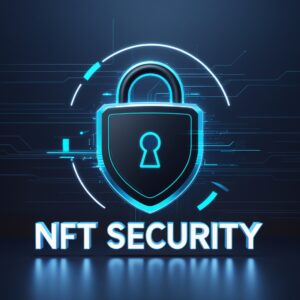An NFT is a digital certificate or token that indicates the ownership of a unique property. Unlike cryptocurrencies such as Bitcoin or Ethereum, which are fungible and can be exchanged on a 1:1 basis, NFTs are unique—there are no two the same.
NFTs exist on a blockchain via smart contracts, typically the Ethereum blockchain, although other blockchain technologies are also employed. These smart contracts hold the specifics of the asset, thus creating evidence of ownership and provenance.
With rising values, NFTs have drawn the attention of hackers and con artists. NFT owners face considerable hazards one of which is loss of the NFT due to technical glitches—like hacking and phishing scams that are executed with great sophistication—without proper safeguards.
Most NFT investors don’t see all the risks they take. They often concentrate only on acquiring or flipping items, ignoring security. This negligence could result in ruinous loss. It’s important to understand that securing NFTs is not only about technology. It’s about understanding human vulnerabilities and scams used by criminals.
Protecting Your NFTs with Cold Storage Wallets
The first and foremost step to securing NFTs is to use cold storage wallets to some extent. These hardware devices, specifically designed for the purpose, store NFTs in an offline environment and, as such, are less likely to be targeted by online hacking and phishing. In contrast to hot wallets with an online connection, cold storage’s main purpose—protecting private keys from online threats—means it offers significantly enhanced security.
Among cold wallets, Ledger and Trezor are well-known options. They require users to confirm transactions physically, adding another layer of security against unauthorized access. Always back up the seed phrase you receive when you create a wallet; it will be your only way to recover access if you ever need to restore it or troubleshoot a problem.
By keeping your digital assets in cold storage, you’re basically preventing your NFTs from being compromised altogether. It’s like putting your cash away in a safe. It brings a certain peace of mind that your digital treasures are securely locked away.
Safeguarding with Multi-Factor Authentication (MFA)
Adding an extra layer of security, such as Multi-Factor Authentication (MFA), can be a game-changer in protecting digital assets. MFA requires users to provide two or more verification factors to access their accounts. This can include a combination of something they know (like a password), something they have (such as a security token), and something they are (fingerprint or iris recognition).
Many NFT marketplaces and wallet providers offer multifactor authentication as a standard feature. To protect your NFTs from unauthorized access, enable this feature. It adds an additional line of defense beyond passwords, which can often be compromised.
The effectiveness of MFA is further enhanced when software and firmware are updated to the latest version on a regular basis. Updates typically include security improvements, correcting vulnerabilities that may have been present in earlier versions. Keeping apps and devices updated ensures the best possible protection.
Staying Alert to Phishing Scams
 NFT holders specifically are a favorite target of phishing scams. These are schemes in which scammers pretend to be, say, a well-known NFT platform and ask users for their private keys or passwords. To catch users off guard, they might send emails or make fake sites that look like the real thing.
NFT holders specifically are a favorite target of phishing scams. These are schemes in which scammers pretend to be, say, a well-known NFT platform and ask users for their private keys or passwords. To catch users off guard, they might send emails or make fake sites that look like the real thing.
Be wary of unsolicited emails or messages requesting personal information, even if they seem very legitimate. Always check the URL of a site to make sure it is correct before submitting any data. Well-known companies hardly ever ask for sensitive information by email.
As tactics change, so should your awareness of these scams. Join communities, follow reliable news sources, and learn from other users’ experiences. Plenty of times, the community can give you updates on threats and defenses in real-time.
Regular Audits and Monitoring Activity
Doing routine security checks and monitoring account activity can help detect early any unusual activity patterns, allowing swift action before any major damage occurs. Checking your bank statements regularly is akin to an essential security practice for your NFT activities.
You might consider using tools that specifically look for abnormal transactions in the blockchain. These tools flag suspicious activities and alert you, thus giving you the opportunity to take preventive actions. Such proactive measures sometimes are the best way to defend already valuable assets from new threats.
Make sure that the contact information you have with any marketplace or service linked to your NFTs is current. This guarantees that you will receive, in time, notifications, updates, and alerts. Quick action is often an essential thing when it comes to preventing or minimizing the effects of possible security breaches.
The Role of Education and Community Involvement
Doing routine security checks and monitoring account activity can help detect early any unusual activity patterns, allowing swift action before any major damage occurs. Checking your bank statements regularly is akin to an essential security practice for your NFT activities.
You might consider using tools that specifically look for abnormal transactions in the blockchain. These tools flag suspicious activities and alert you, thus giving you the opportunity to take preventive actions. Such proactive measures sometimes are the best way to defend already valuable assets from new threats.
Make sure that the contact information you have with any marketplace or service linked to your NFTs is current. This guarantees that you will receive, in time, notifications, updates, and alerts. Quick action is often an essential thing when it comes to preventing or minimizing the effects of possible security breaches.